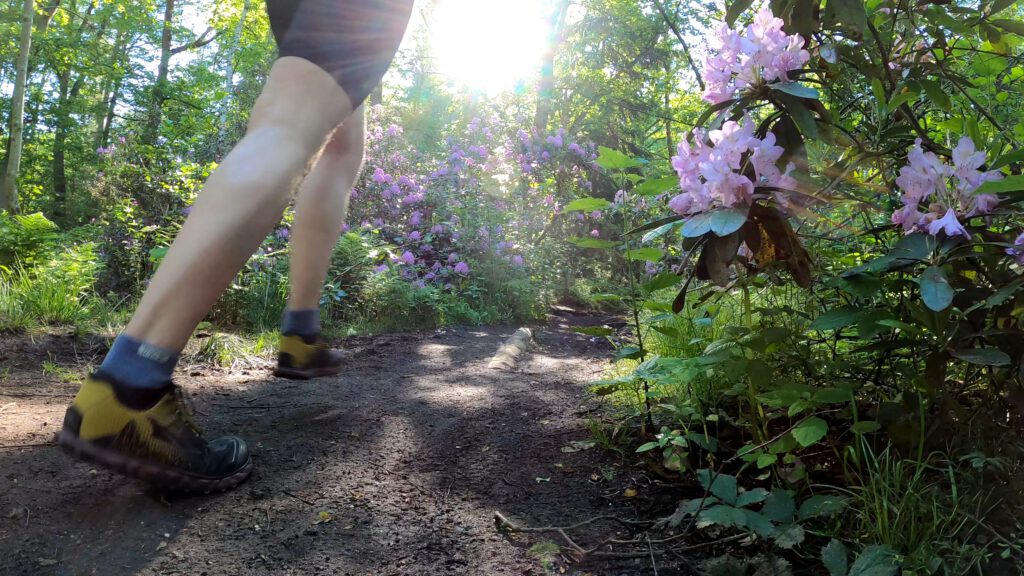
Finally on the other side of the border; it had been really long ago since I was in Germany. Would the sore calves and shins be able to manage 47 km?
"At temperatures above 28 ºC, it is dangerous and prudent for everyone not to exercise", they say on Goedemorgen Nederland the morning of my first stage. In this part of Limburg it was expected to become 29 ºC ... The omens for a good run were not great. In itself, a high temperature is not such a big problem, but especially when you're not used to a lot of warmth after a cold period, it can be hard. And then we also have those cramped calves. How will it go?
The good news this week was that Germany is accessible again without a negative test certificate. At least, if you would not stay longer than 48 hours. Because I would not be surprised if the situation could change at any moment, I decided to run in the first stage to Brüggen, Germany, the passage in the Maas-Niederrheinpad that I could start straight from my bed and breakfast. One problem of this route was the public transportation. There is not much public transport because of the border – no bus from Brüggen directly to Roermond or Venlo – so taking the public transport back would be a long journey in a medical mask that is less easily available in the Netherlands. Like a good runner, I therefore extended the route a bit to end up at the train station in Venlo, after about 47 kilometers. All ingredients for a drama or should I say no guts, no glory?
Rhododendron
From my youth at a Christian elementary school, I can still remember that cursing was not allowed and you only could say rhododendron to get rid of the anger. But actually the start went quite well. Because I had been resting for a while, my body was eager to go, even though it felt a bit stiff. And that rhododendron? Well, that's a damn beautiful bush that I came across after a few kilometers in the woods near Swalmen.
I really marveled at the sights those first few miles. Flowing brooks, unfortunately the watercrossing was not on my route, lots of green and many flowers, including those rhododendrons. Although my body wanted to speed up, the views and photo opportunities made it all go relatively slow. It also made me very curious about the rest of the route.
Hikers
The region around Venlo and Roermond is one of the busiest regions in terms of footpaths. There are many NS routes, but the most important artery through the region is of course the Pieterpad. Lately, this path has been the focus of attention again among ultrarunners. Due to the lack of races, many top Dutch runners, including Irene Kinnegim, are trying to set a fastest known time on the Netherlands' most famous pilgrimage route.
The Maas-Niederrheinpad has been in existence since 2011, when it was created from two older paths, but it has never achieved the fame of the Pieterspad. About 2 kilometers after Swalmen it was deserted. No hikers with full packs, like I had seen before on the train and in the village. In fact: during the entire hike I didn't meet any hikers outside the immediate vicinity of a town. A handful of German cyclists, the trail consists mainly of gravel and is therefore easy to cycle on, and that was it as far as other travelers were concerned. So I could run and sometimes even sing without being distracted by anyone.
Boundary posts
On the map Germany seems much further away than it really is. Soon I see the first border posts and a little later I am standing on a beech avenue outside the Netherlands. It is also a mystery to me how one should ever stop wanderers in this border area to check for test certificates. If you overlook the border posts – and they are not as conspicuous as the ones with the Belgian border – you don't even realize you have left the Netherlands.
Slowly but surely this becomes clear from the signs here and there. Despite the fact that this is not a very well known route, they have put a lot of effort in making the signs.
Unfortunately, not everything is accessible because of the corona. I would have liked to climb the lookout tower in the Schwalmbruch. This – nature-wise very beautiful – area would have changed under the influence of Garzweiler, one of the largest opencast lignite mines in Germany. With opencast mining you slowly dig away the landscape, until a deep pit (210 m already) arises. The water in the pit has to be removed in order to mine the coal and this water management also has an impact on the immediate surroundings. The dark colour of the water here – slightly acidified because it comes to the surface via lignite residues – is special and that same water also determines the plants that grow here.
No dipping
For a long time I can follow the little river Swalm. One moment it is a relatively narrow brook, through a heathy landscape, the next moment it is a wide river. But it is not really a river for swimming, which would be nice in this warm weather. When I get to the Venekotensee, a gravel pit, I hope to find a swimming place in this area. But everything is signposted with German gründlichkeit that you are not allowed to swim here. And as we are right next to the path that has become busier again so close to Brüggen, a dip is perhaps not the best idea.
I am very surprised that you are not allowed to swim here. The water is very clear, there is no duckweed, it is not full of ducks and doesn't seem to be too deep or shallow. Only when I finally arrive at a beach, where for some time signs point to, I understand. The beach is a paid beach with supervision, where you can't get in without a ticket booth. Bizarre.
The legs could use some cold water. They feel pretty good. Especially the right leg, which was bothering me the most before, feels almost new: not quite supple yet, but capable. But the left shin is still a bit tight, and that hardly bothered me before...
Brüggen
In the meantime, the town of Brüggen with its little castle is almost in sight. I am eagerly looking for a bench to reapply my sun block lotion but a primary school has children running over the last few metres towards the town. It's funny to catch up tothose little ones carrying my full pack. What surprises me: in many countries children try to overtake you, especially at this low speed, but the German children didn't look up or down. I even had to stop because one of them had to turn around a pawn in front of me.
Changing your sunscreen lotion regularly is something I can absolutely recommend. Often you will notice that after 2-2.5 hours you start to warm up. Even if you sweat a lot, the cream still helps against sunburn, but maybe even more important: the zinc oxides work as a kind of mirror for the sunrays. So that means you get less warm. And if you can rub your warm skin with a cooler cream, that's always nice too on a hot day. Bonus tip: apply, don't spray, and always buy a white cream. Then you know for sure that you're covering everything.
A few minutes after re-lubricating I am in the centre of Brüggen. There are a few shops and terraces. The ice cream parlour looks attractive. But I have no idea what the rules are on terraces here, so I run on.
Sweating
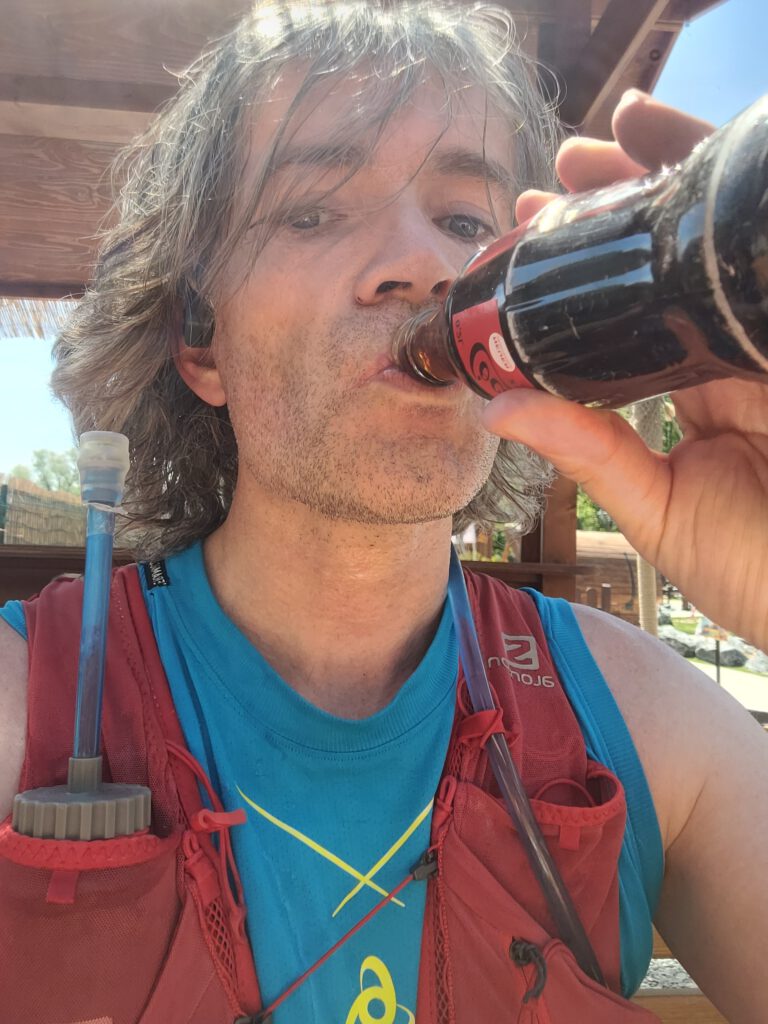
When I started this run, I had brought 3.5 liters of water/sports drinks. But it was very hot and although I drank a lot, I was starting to get a little worried. My T-shirt and body seemed to be getting a bit dry. That suggests a lack of fluids. But with almost a quarter to go, I didn't have much water left, and I was very thirsty.
The last open terrace was also some time ago. Did I long for some cool drinks now... Running didn't go all that well anymore, my left leg made itself known every now and then. But judging from the map, there were hardly any restaurants or cafes in the neighborhood to get some relieve.
The annoying thing about a situation like this is that you start thinking more and more about that cold coke or ice cream. And you will start walking less and more, which in turn will lead to a poorer running posture and more pain in the shin. In short: you dig a hole for yourself.
I was delighted to finally see an Ola flag again. And even better: the rules were written down, order with mask on, leave data behind and you could eat and drink at this midget golf course in the Nettedal. And so I sat with ice cream and coke between the golfing families. It was dirt cheap, but if I had only been allowed to drink when entering the course, I would have bought a ticket to go play midget golf...
Is it still far?
Running immediately went a whole lot better. Also my shin didn't let itself be heard anymore after the extra fluids. And I was very happy with the beautiful part of the biological station Krickenbecker Seen. This is one of the oldest protected nature reserves in the area, where they try to preserve the lakes and marshes for water birds like the little grebe. Other special birds such as the bee-eater can also be found here.
Despite the fact that I had just drunk a lot of coke and had an ice cream, moisture was a problem in the last kilometers again. This time rescue came near Venlo. A visitors center had a water tap where I could get fresh and cool water. I drank at least another half liter from the tap.
However, the last few miles continued to go pretty slow. In the middle of the day, and not in the woods but on asphalt in the city, the heat was oppressive. But I could justifiably look back on a beautiful day as I sauntered into the train station in Venlo.
Once back in Swalmen I first showered and then went to the Merte, a meeting point for Pieterspad walkers. There it was time to refuel after today's walk. Not only did I have empanadas filled with cheese and spinach, they were served with both tagliatelli and fries. Just by looking at the food, the blood sugars shot through the ceiling and they unfortunately stayed there, like helium-filled balloons.
The next day was already in sight. I finally decided to do a short route, also because of the slight pain in my left shin. How that went you can read in: Maas-Niederrheinpad: burning between Swalmen and Roermond.
About the route: The loop was slightly modified to start from the bed and breakfast, but further follows stage 23 (map D1-D3), stage 12 (map 35-38) and stage 22 (map C1) of the Maas-Niederrheinpad.
Because of the length of the story, I decided to break it up into five parts:

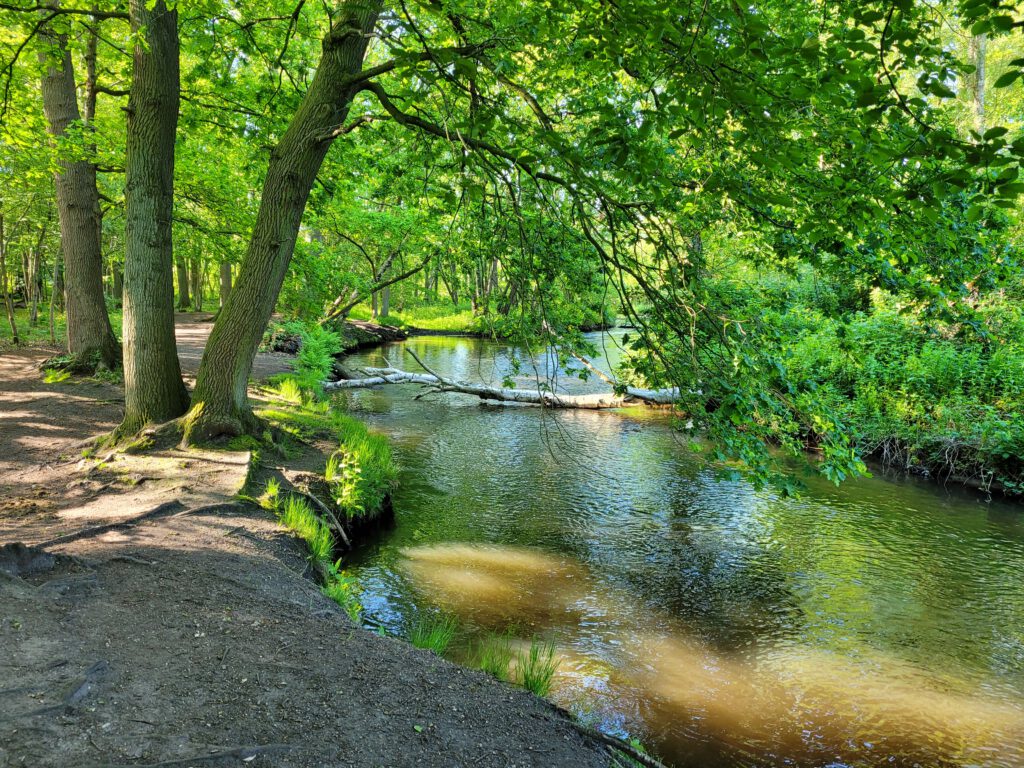
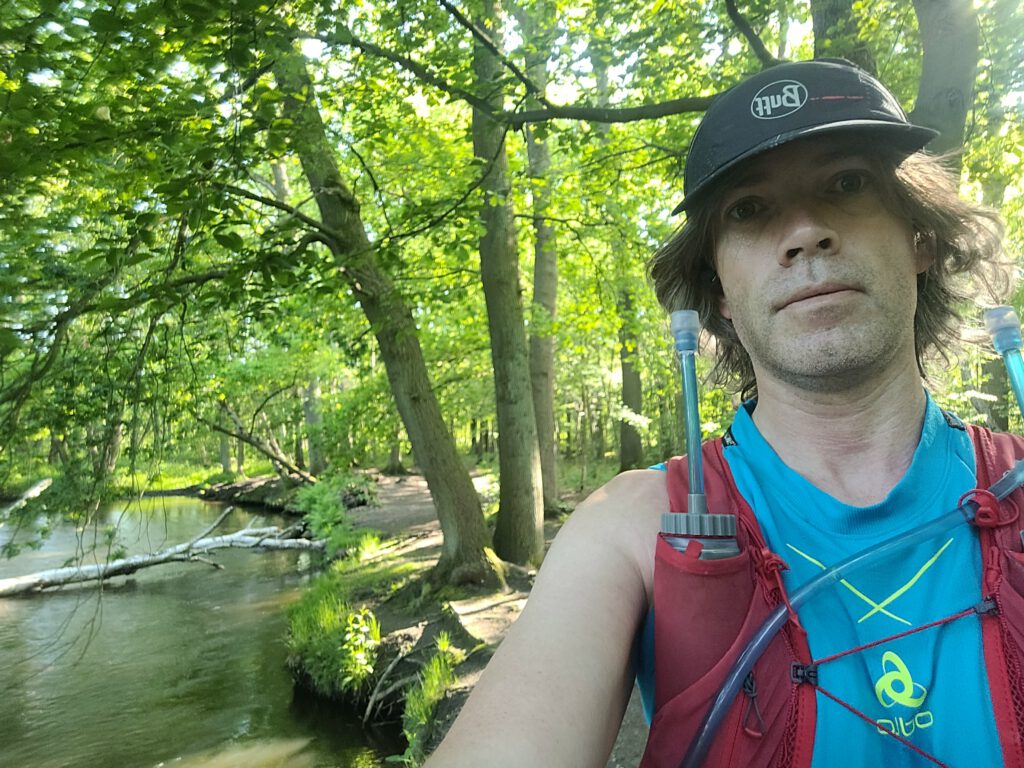
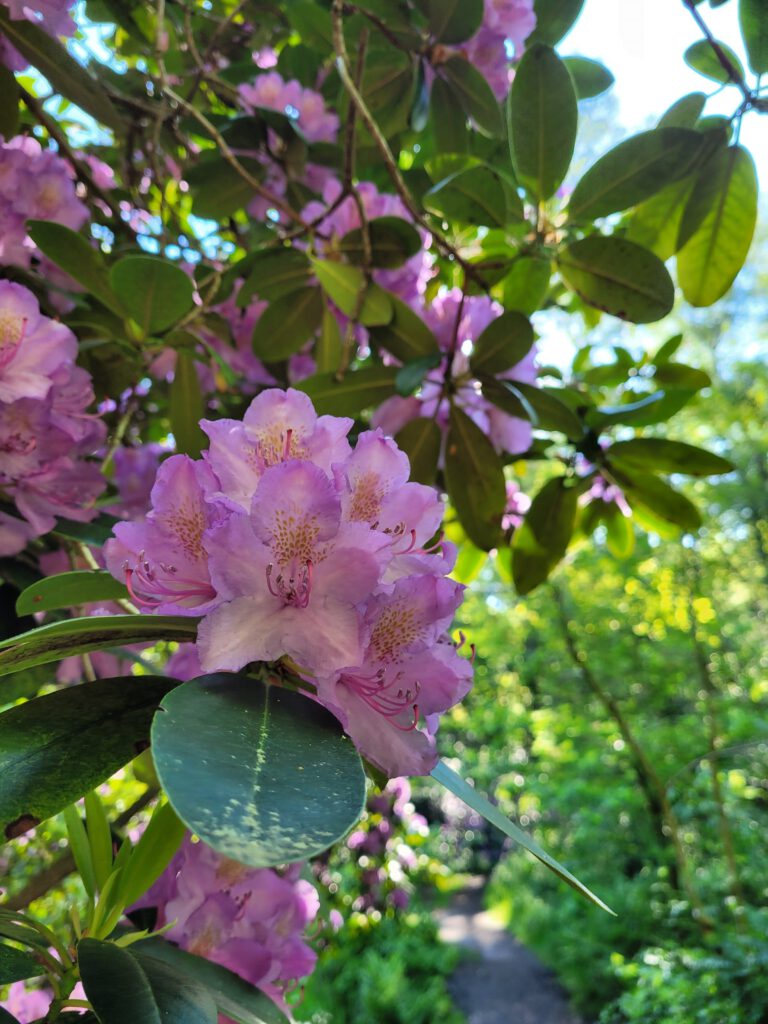
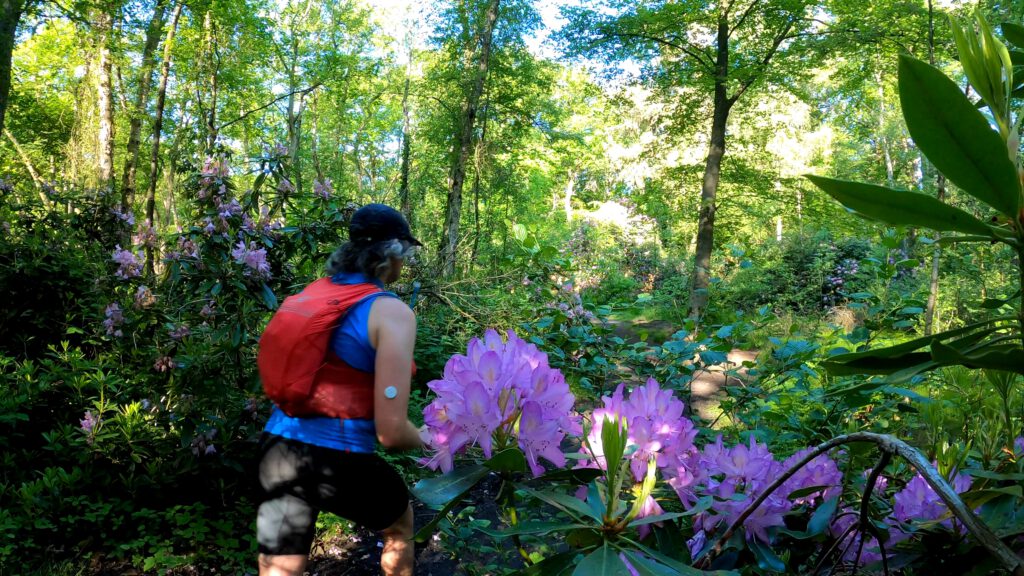
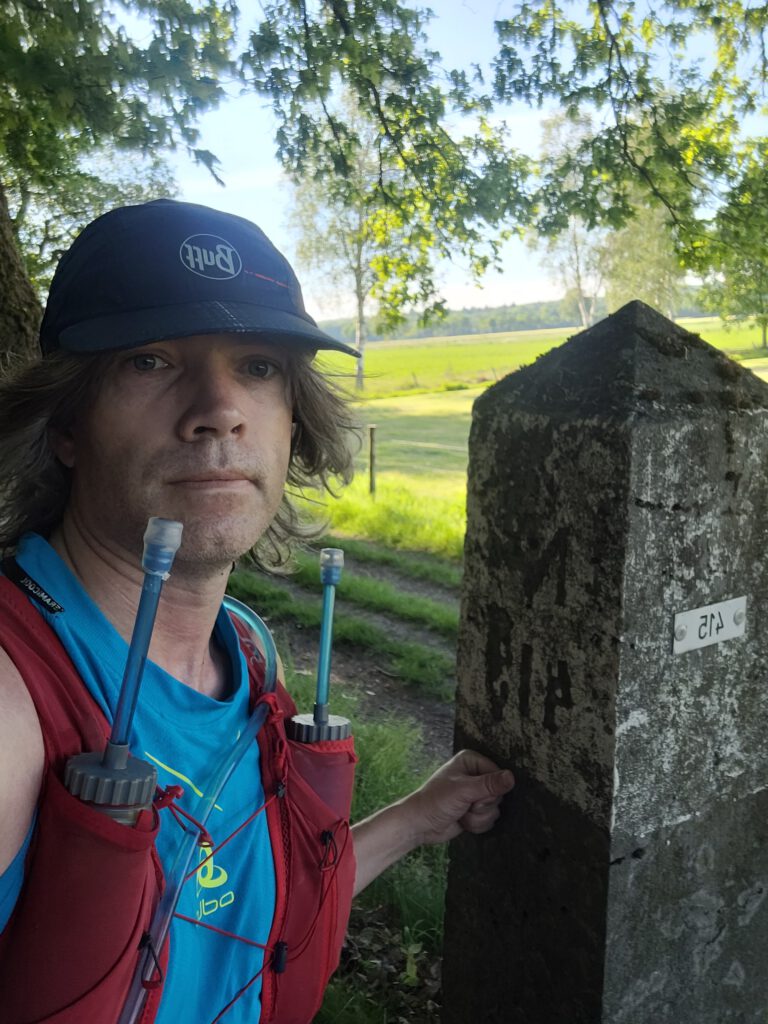
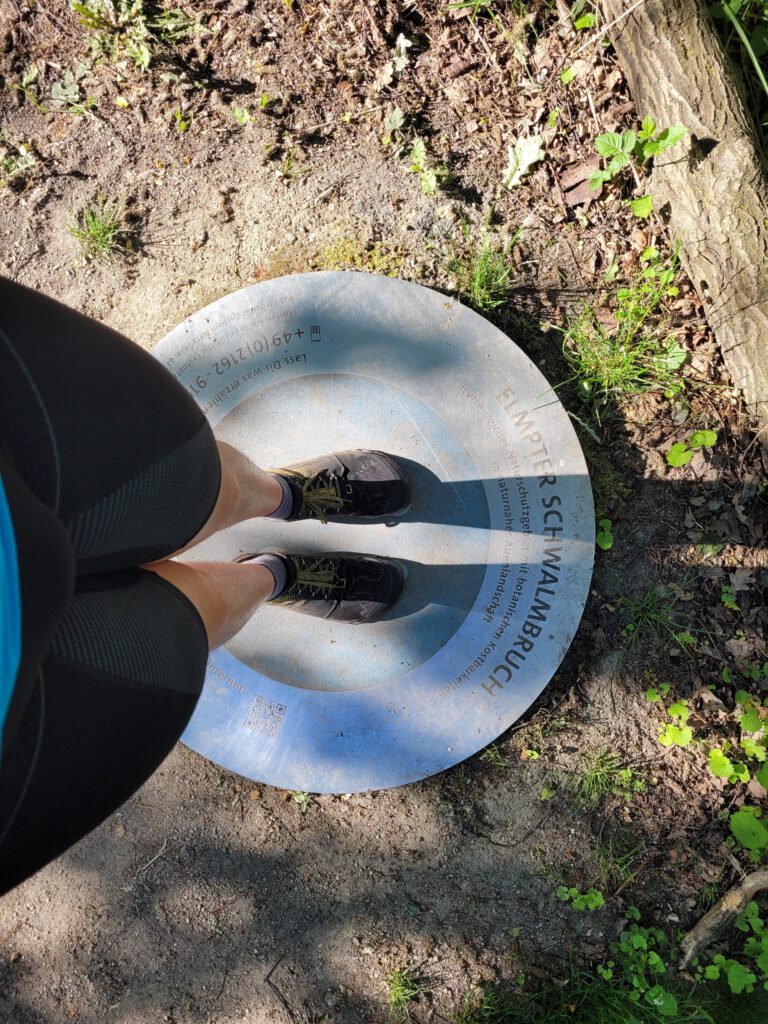
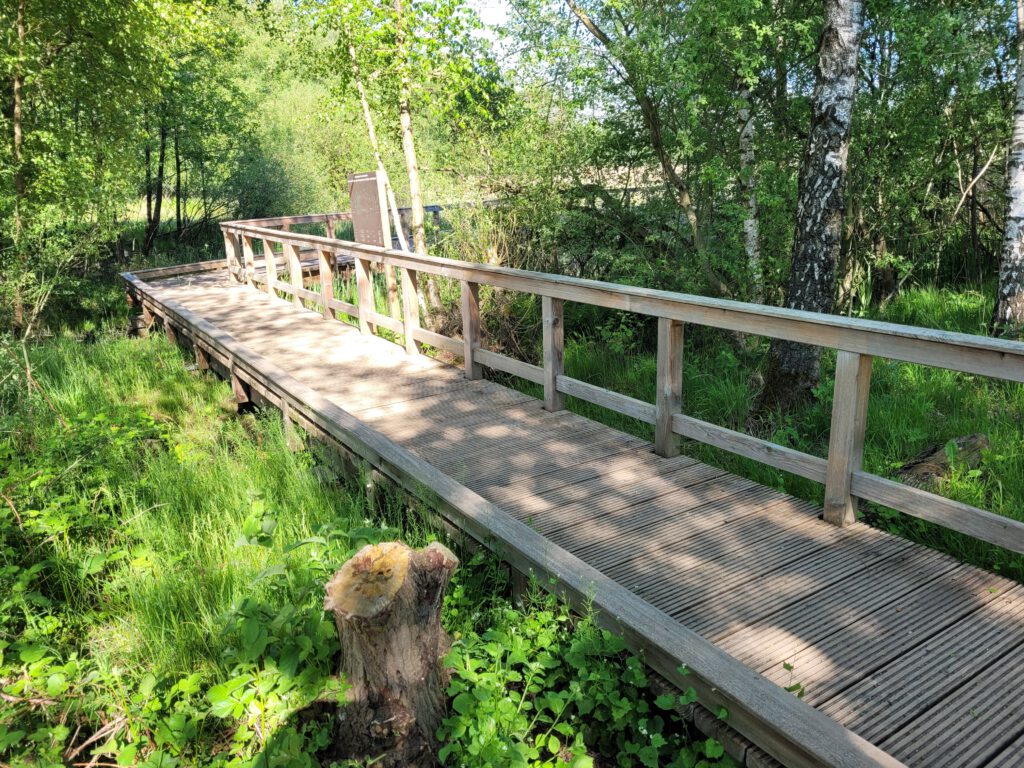
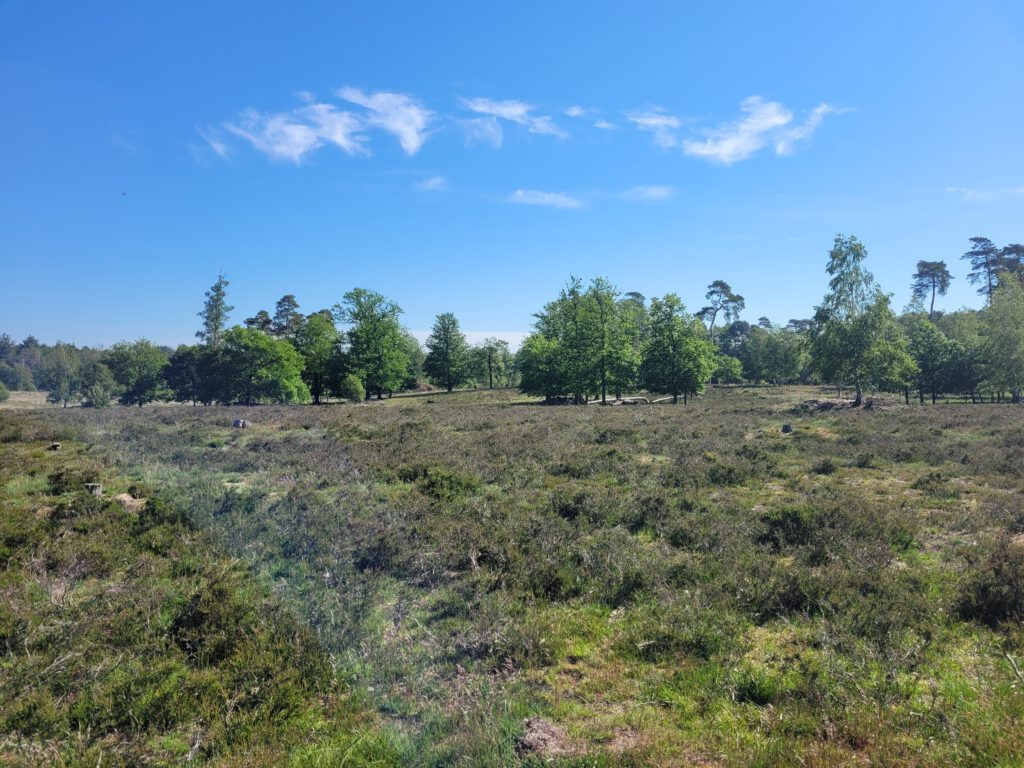
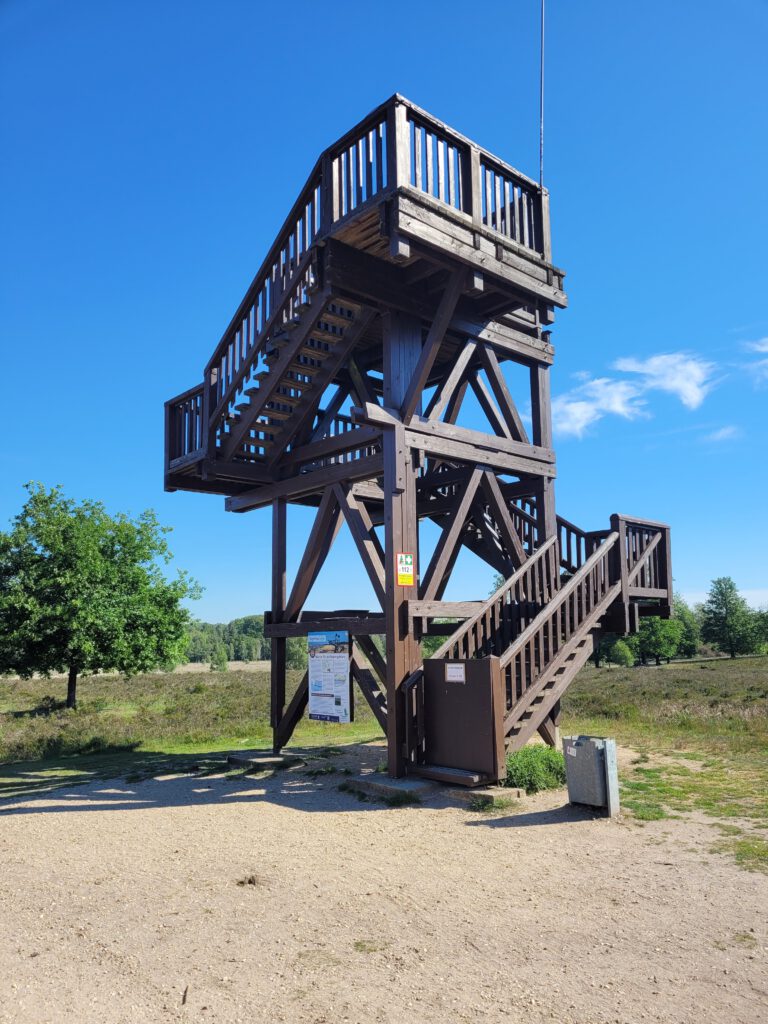
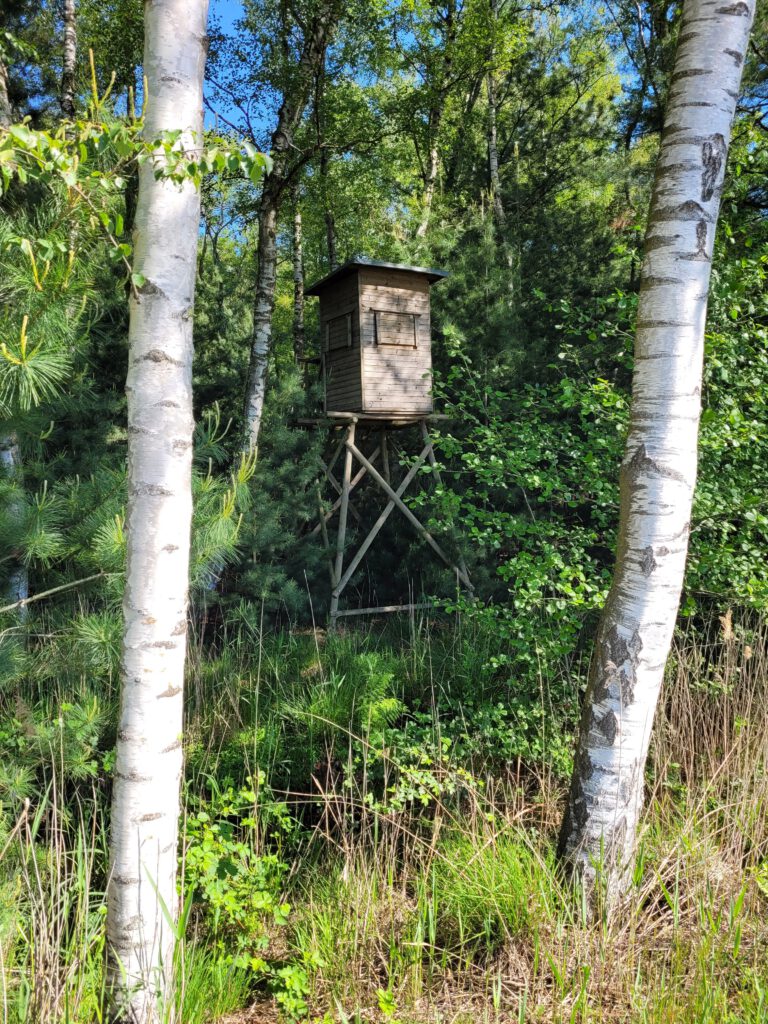
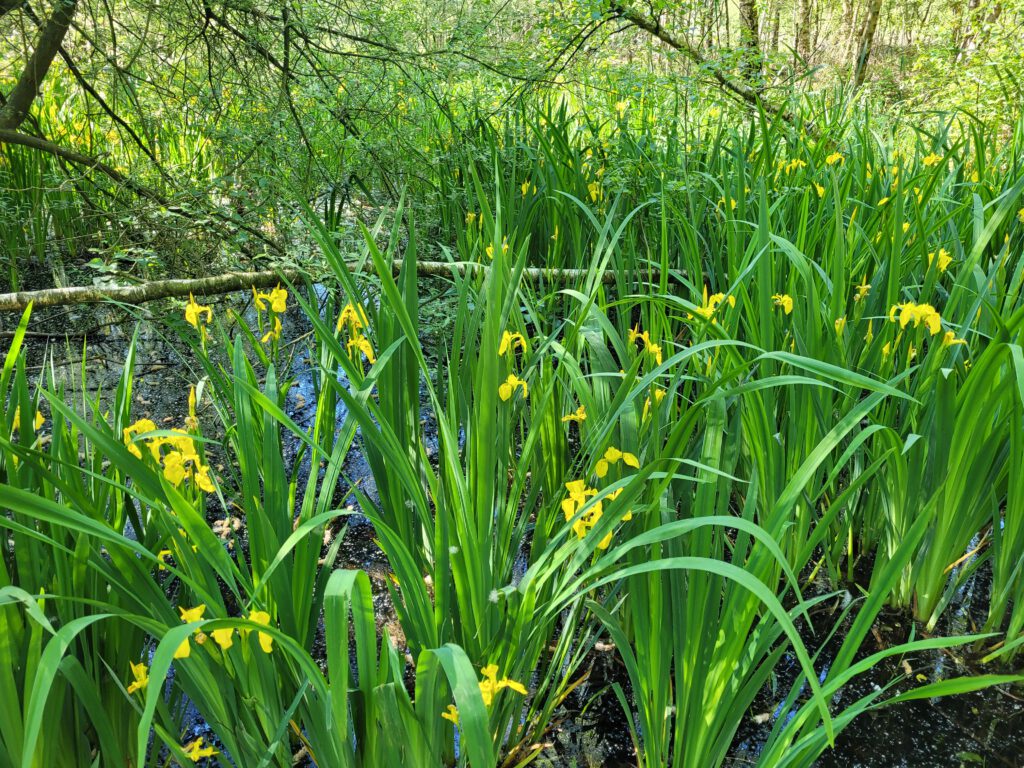
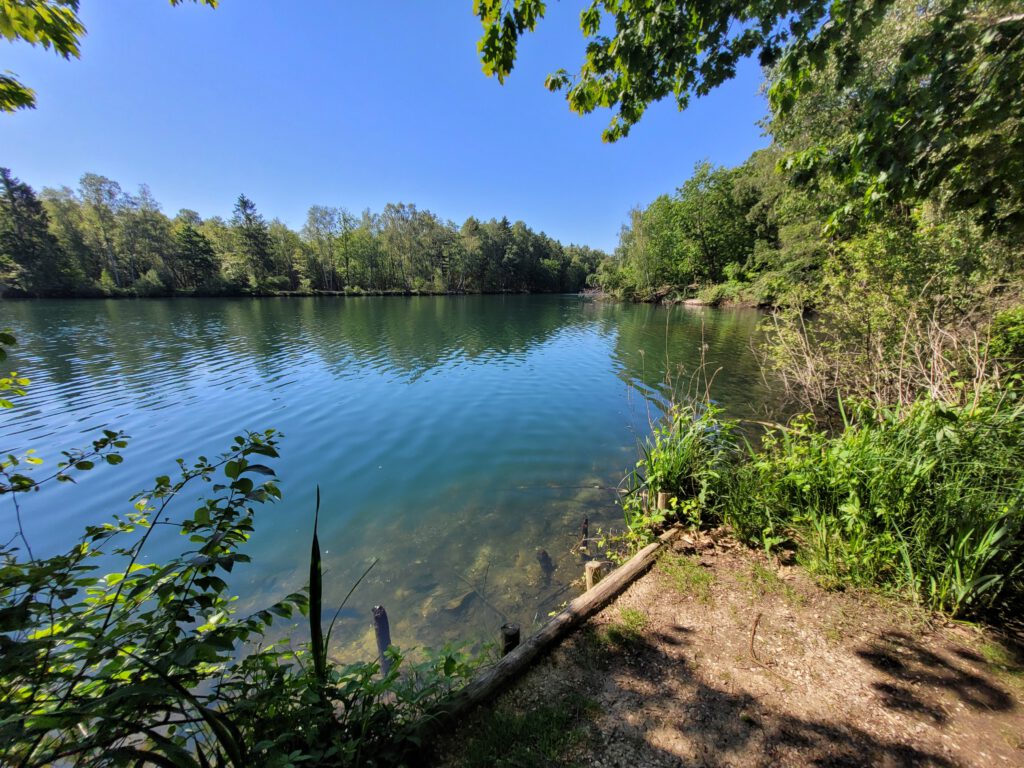
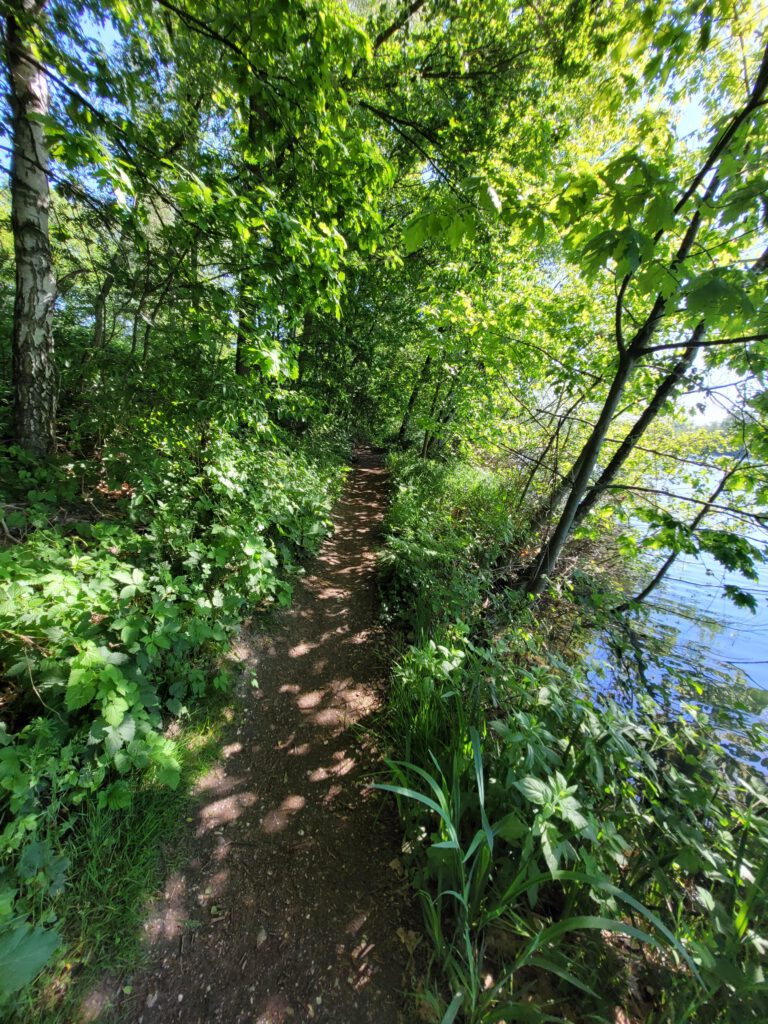
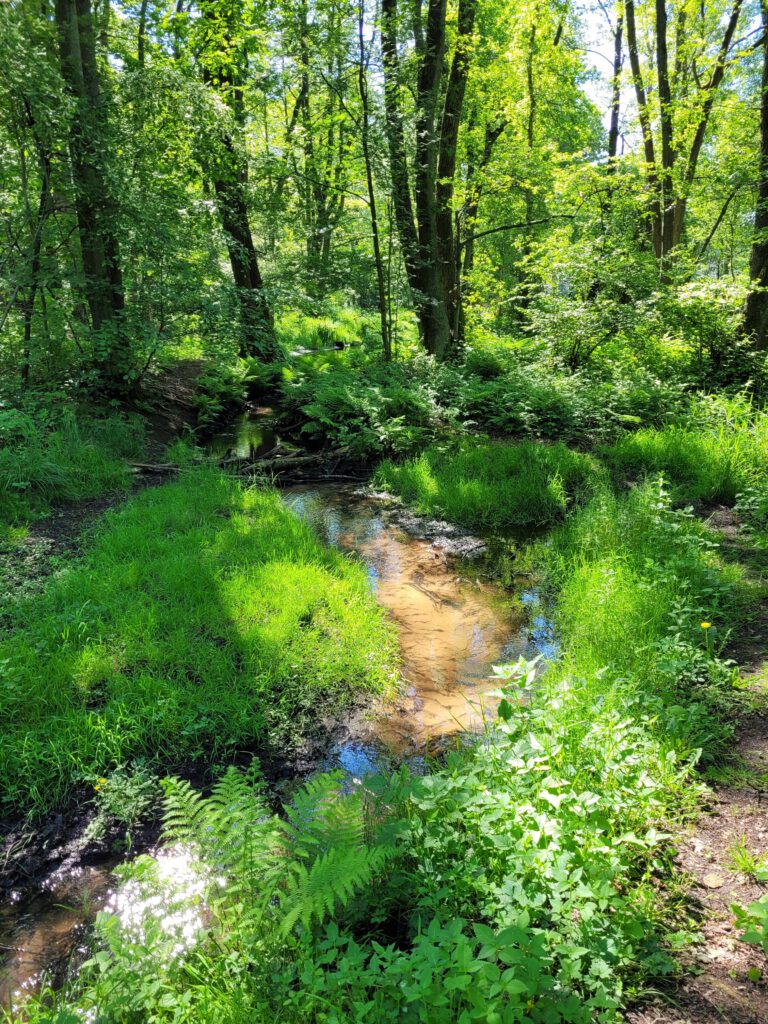
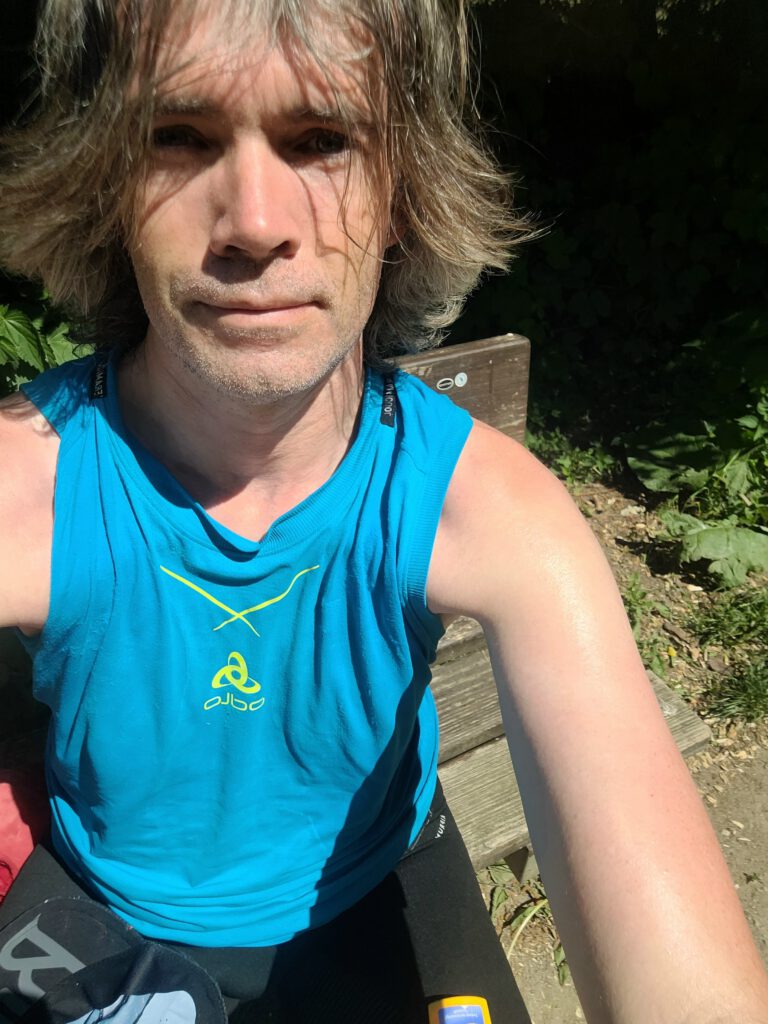
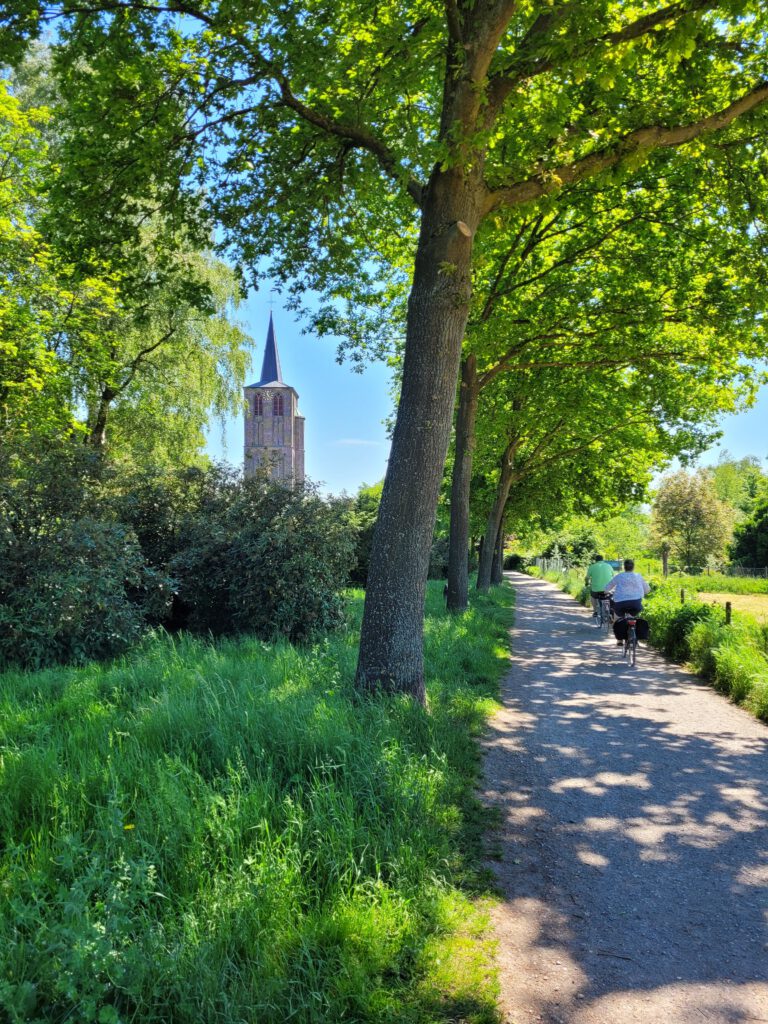
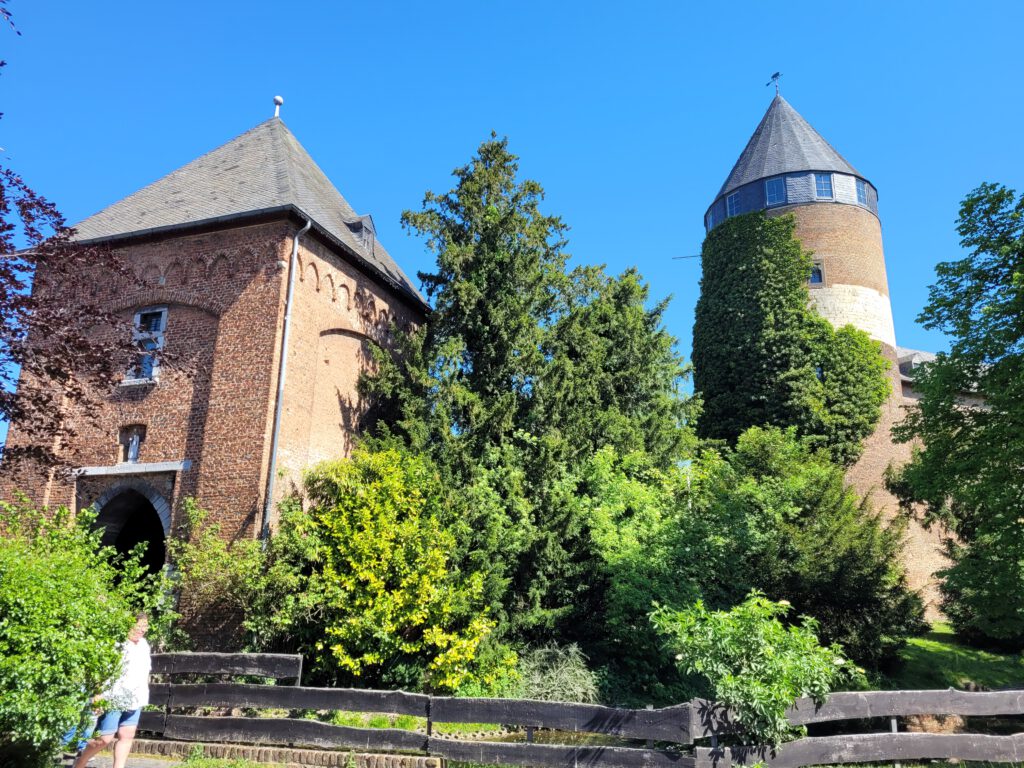
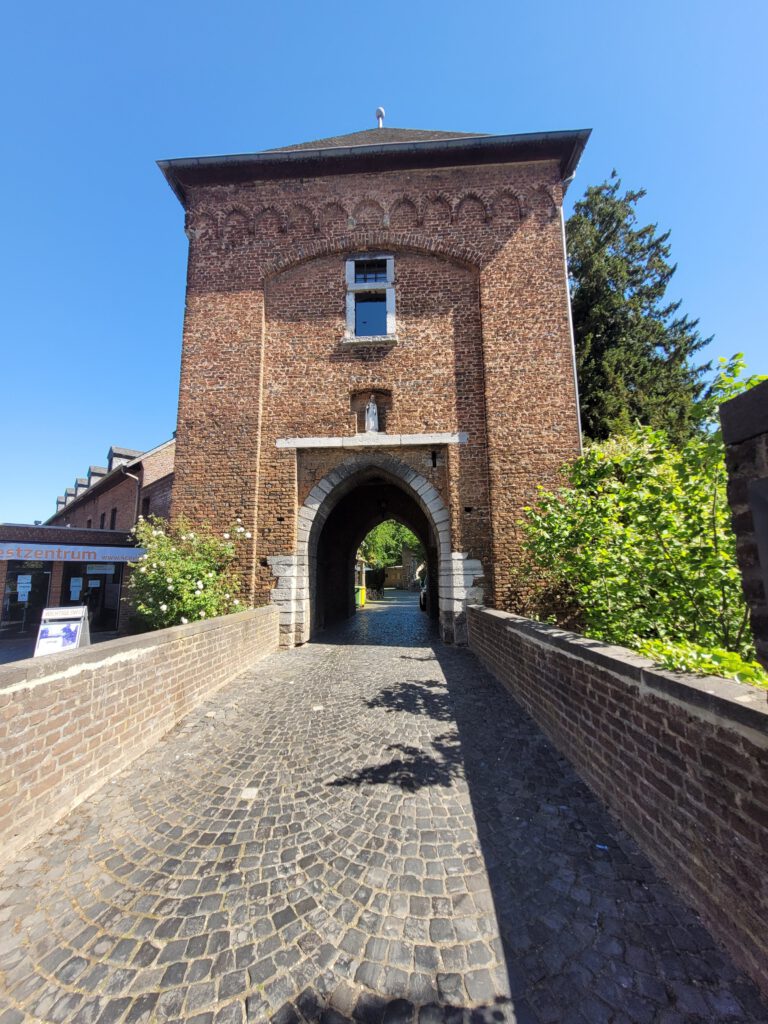
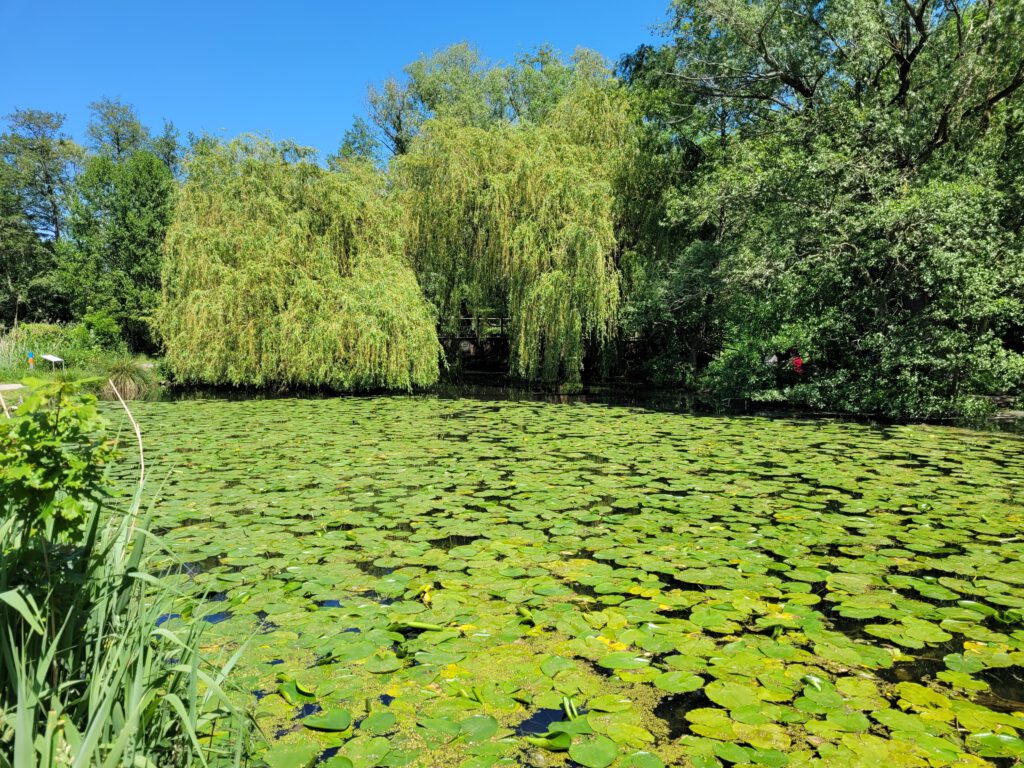
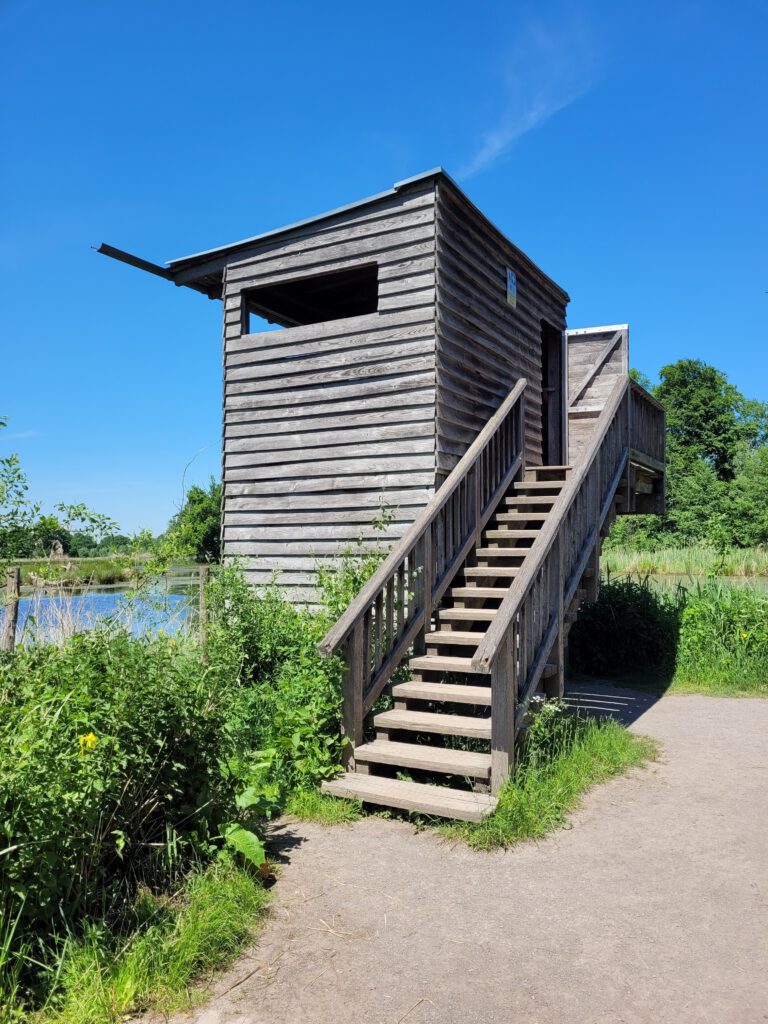
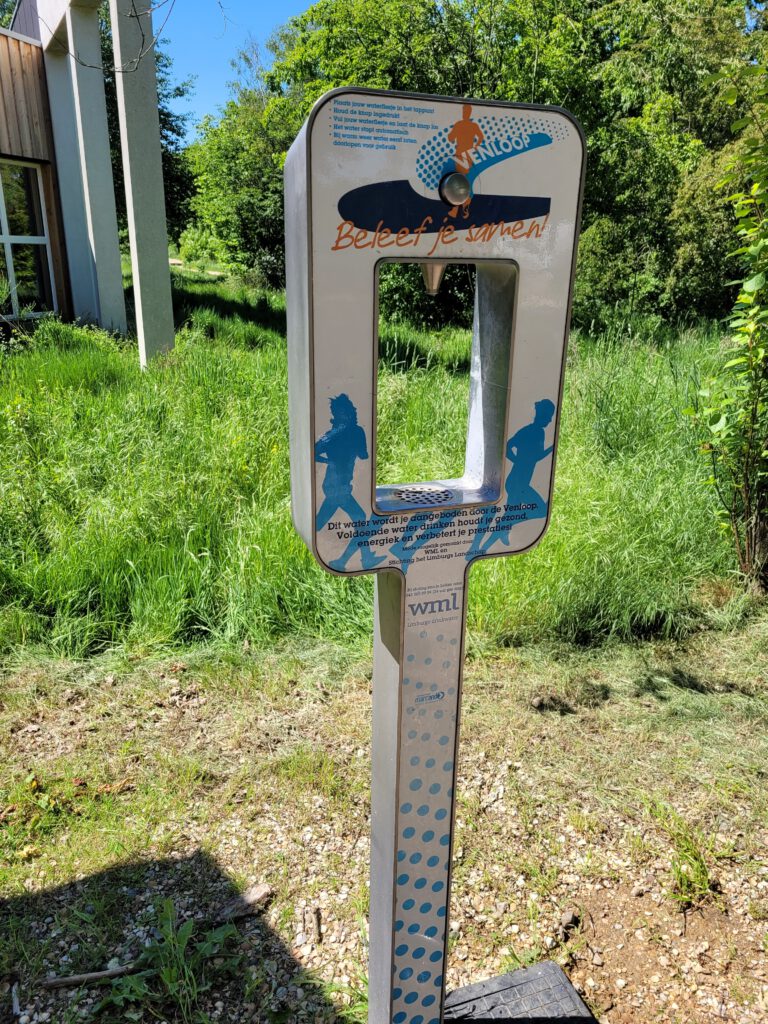
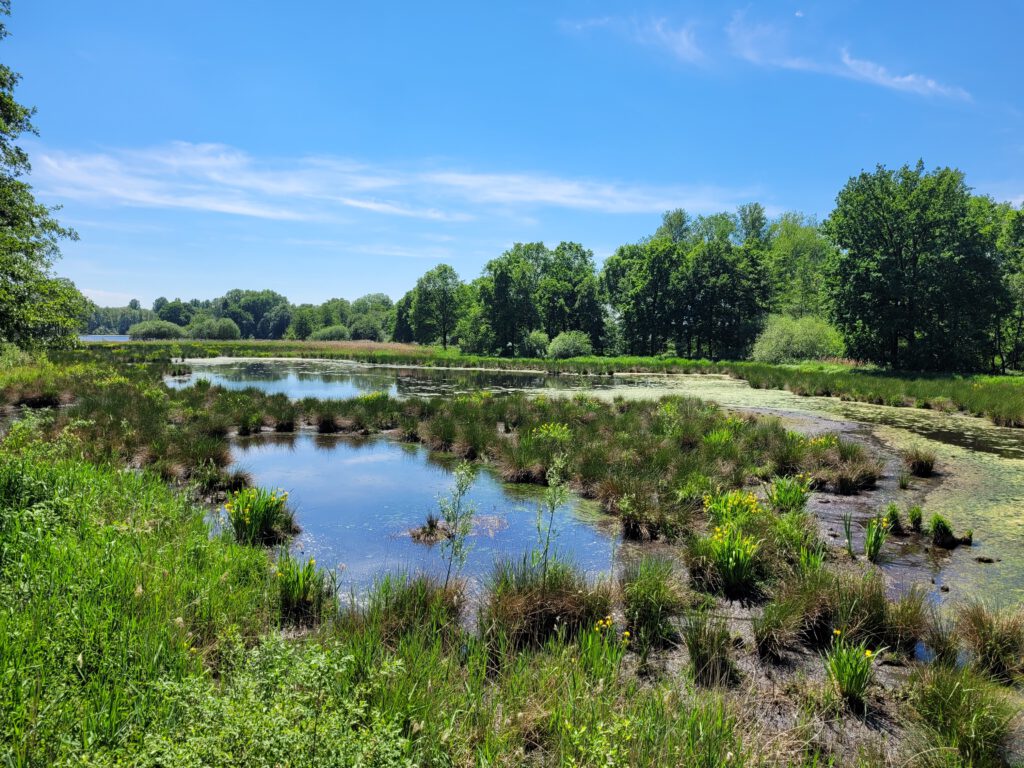
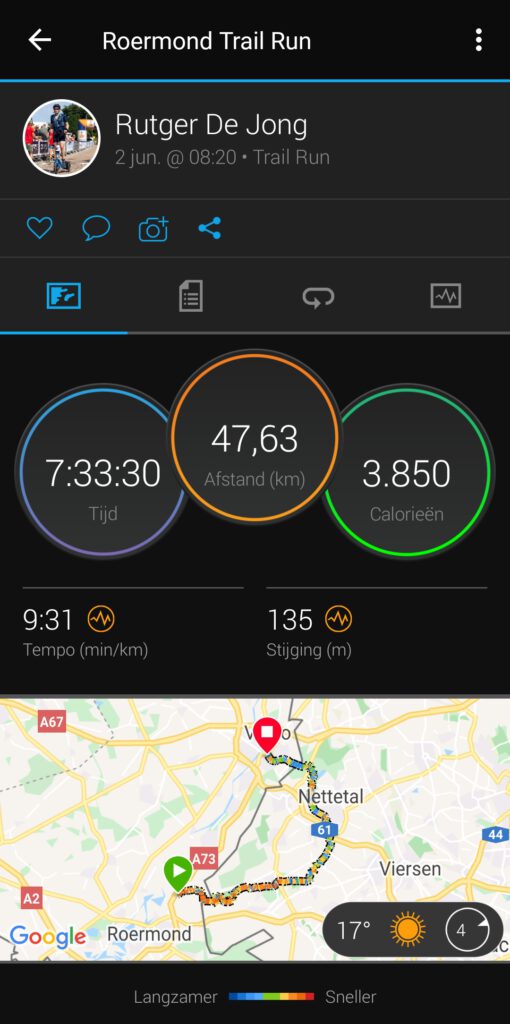
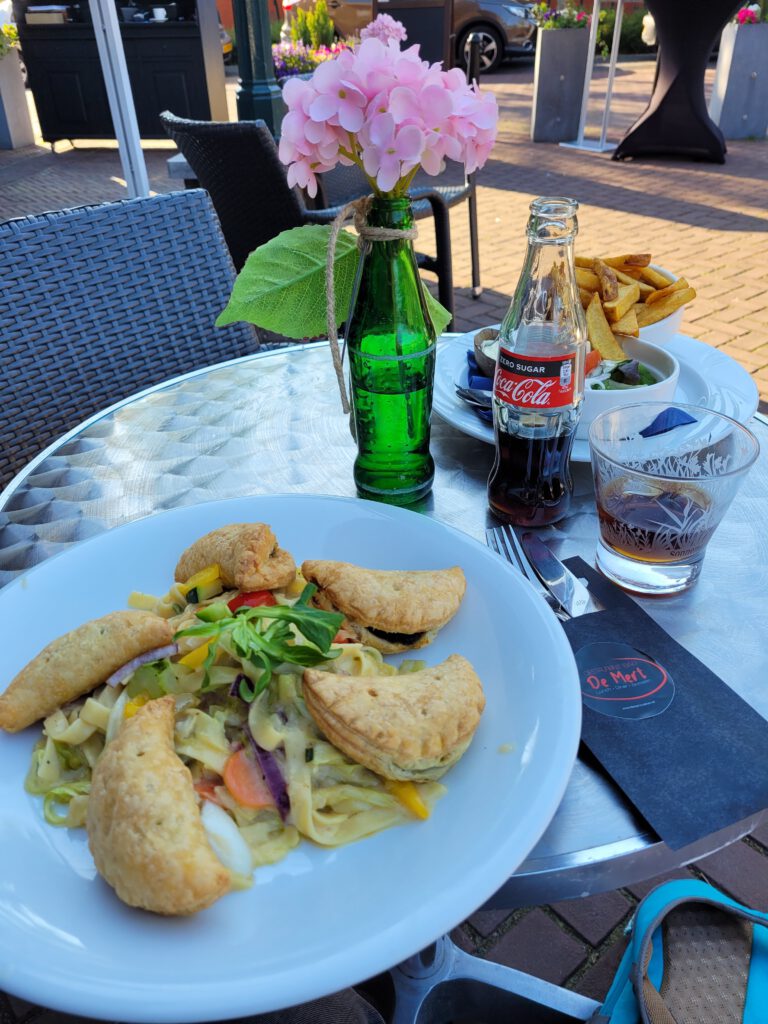
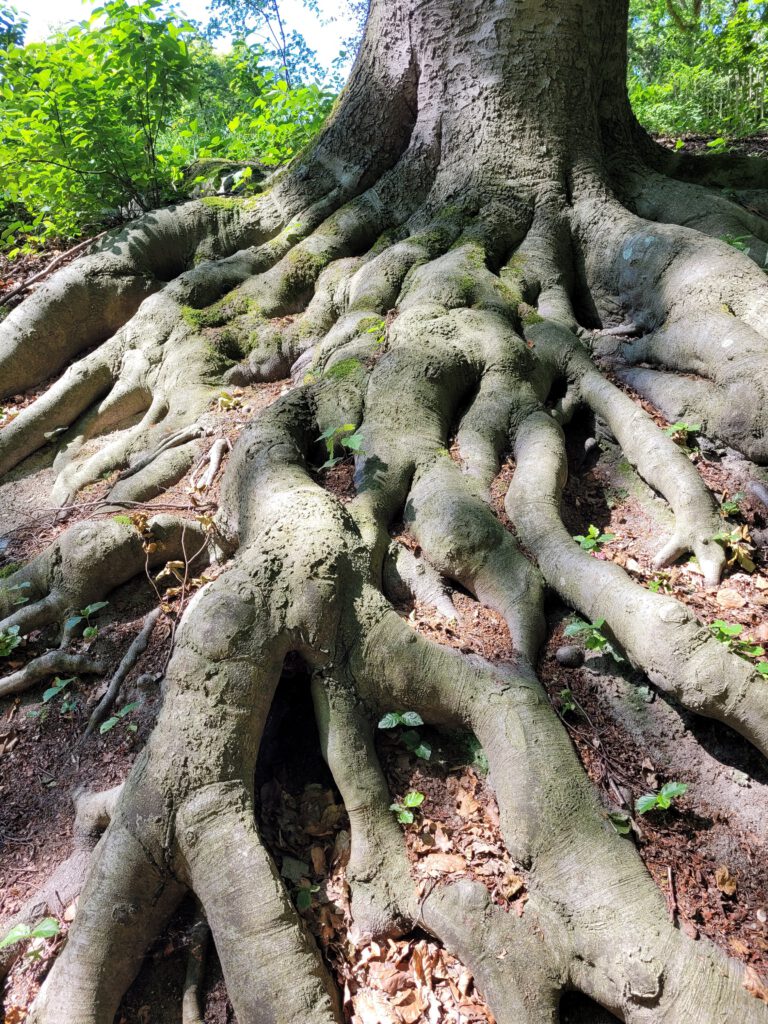
2 Replies to “Maas-Niederrheinpad: hardlopend via het Duitse Brüggen naar Venlo”
Comments are closed.